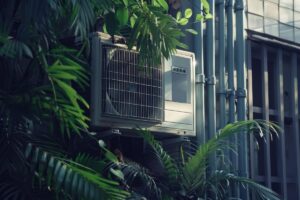HVAC
Is Your HVAC System Costing You More Than It Should? Signs It’s Time for an Upgrade

Home comfort is a priority, and your HVAC system is an integral part of home comfort. But a poorly functioning or outdated HVAC system can quietly drain your finances, with shockingly high repair costs and energy costs. The telltale signs that your HVAC system is costing more than it needs to be the start of a better, more efficient home life. This article will cover the warning signs that replacement time is imminent, so you can make smart decisions for your home comfort and your pocketbook. The Rising Tide of Energy Bills: Picking Up Efficiency Red Flags Through Rising Expenses
One of the easiest signs that your HVAC equipment needs help is an empirically evident increase in your energy bills. If you are paying significantly more to heat or cool your home than you used to pay in past years, even when run continuously, then that is a good sign that your system is not very efficient.
These older systems become increasingly inefficient as time passes, and so they have to work harder and harder to warm it to the required temperature, which then results in greater energy use. Compare your previous year’s bills and see if there is a flag there. Unstable Temperatures and Uneven Cooling/Heating: Suffering from Decrease in Performance
Your HVAC unit, when properly operating, needs to be capable of creating an even temperature all around your entire home. If, in a check-up, you realize that you have a situation where one part of the house is a few degrees warmer or colder than the other rooms, or if your system will not work with the temperature that it should, then definitely, it points to inefficiency.
Similarly, if you receive more than normal frequent visits from your repairman, then that is a definite sign that your system is at the end of its shelf life and must be replaced. Age and
Lifespan
In Control of Your HVAC System’s Shelf Life Like any other machinery, HVAC systems expire. Most will last between 10 to 15 years. If your system is getting old or has already passed that threshold, it is likely not working as well and maybe on the brink of malfunctioning. Replacing with a newer, more efficient system will conserve much energy and heat your home more warmly.
Too Much Humidity and Dust
How to Know if There’s a Problem with Indoor Air Quality Not only does an unhealthy HVAC system not maintain temperature, but also it does not humidify and regulate air quality. Increased-than-usual humidity in your dwelling or increased-than-usual dust in your dwelling may be an indication that your system is not operating as it should.
Leaky ducts or leaky older systems cannot pull out humidity or have leaky ducts with dust and allergens traveling through. A retrofit to a high-efficiency air filtration and humidity-controlled system can be utilized to increase indoor air quality and comfort.
More Run Times
Overworked System Your air conditioning system is running longer than it should to reach the desired temperature, it’s more working than it should. The more run time will result in more energy use and quicker system wear. A well-functioning and correctly sized system will be running on and off all day long and maintain the desired temperature without prolonged running.
Filthy Air Filter: Minimizing Environmental and Efficiency Issues
It possesses older heating, ventilation, and air conditioning equipment that utilizes a phaseout refrigerant known as R-22, which is being phased out due to usage because it annihilates the environment.
The new equipment utilizes a cleaner refrigerant such as R-410A. If your equipment has R-22 refrigerant, it is costly to repair, and even the refrigerant is not easily accessible. The installation of the new system, apart from being a method of boosting efficiency, can even lower your footprint.
Technological Advances
Smart HVAC Features Adoption More modern HVAC systems have arrived with advanced features that can potentially make a huge difference in terms of efficiency and comfort. Smart thermostats, zoned systems, and variable-speed blowers offer highly precise temperature control and industry-best energy consumption. Substitution to such a system with these capabilities can offer much greater control of your home environment and lower energy cost.
Frequent Cycling: Spotting System Stress
If your heating, ventilation, and air conditioning system keeps cycling on and off, then that simply means that it cannot hold the temperature to the set point anymore. Some of the common reasons for system cycling include clogged air filter, faulty thermostat, and oversized equipment. Their repair prior may avoid premature wear and tear as well as ensure that the system efficiency improves.
Final Thoughts
Hear out these warning signs and act sooner than late to upgrade your HVAC system with a more efficient one, save less money, make your home feel cozier, and pamper yourself with a green space. Your wallet does not need to take the hit for your inefficient HVAC system; invest in a system that functions and operates with optimal efficiency.
















